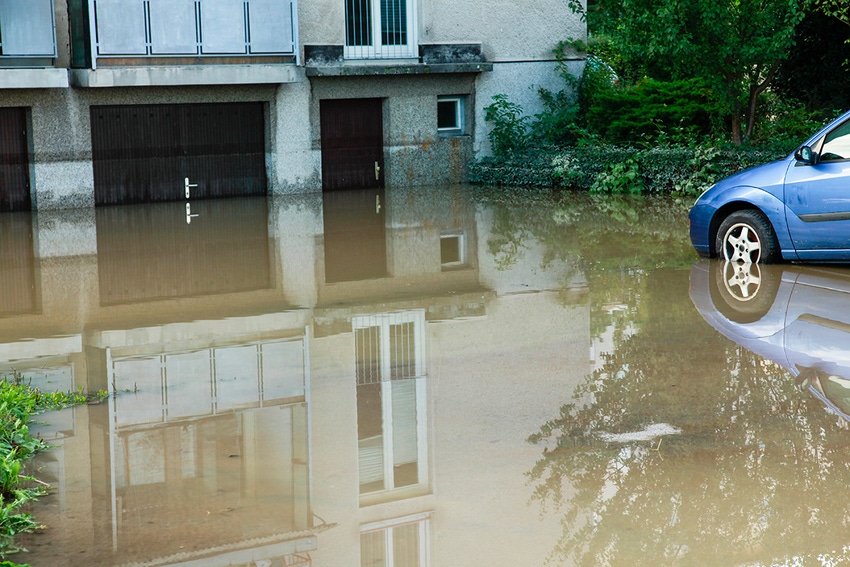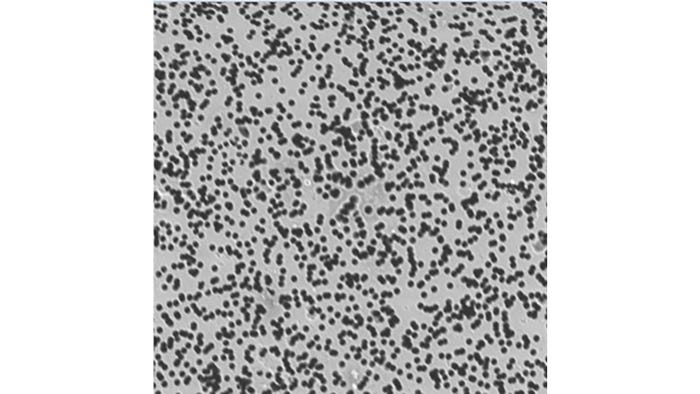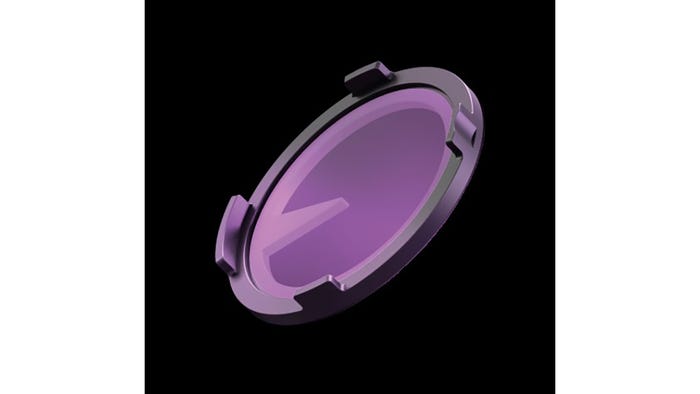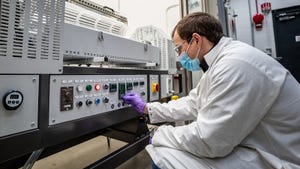Enhancing EV Safety: Membrane Technology Against Rising Waters
Gain insights from Konzelmann GmbH's membrane technology, which fortifies EV safety against rising waters and ensures enhanced vehicle protection.

Deluges in California, flash floods in Pennsylvania, and rising sea levels in Florida – the past couple of years have seen an increase in rising waters due to climate change and extreme weather, even in places where these events used to be not all that common. According to the Federal Emergency Management Agency (FEMA), flooding causes more damage in the US than any other severe weather-related event, an average of $5B annually. And the trend points upwards. When water floods buildings, it affects not just people’s households but also the contents of their garages. While cars with combustion engines usually only need the heater and battery replaced after flood damage, it is a different story when electric vehicles (EVs) and their lithium-ion battery cells are affected.
Li-ion batteries are usually safe up to one meter underwater
Notwithstanding flooding, safety is the top priority when developing and implementing lithium-ion batteries for EVs. One important safety feature is an emergency element built into the outer housing that combines one or more functions like pressure equalization to compensate for internal and external pressure differences or closing the degassing vent to prevent oxygen from entering the internal combustion source. In general, these emergency elements are mandatory for lithium-ion batteries. Though they do not avert battery cells from being thermally excited, they provide relief in the event of an imminent thermal runaway and prevent pressure waves from causing sudden deformation of the housing.
EVs are usually safe in water depths of up to one meter, which is all required for the tests specified in the IPX7 protection class. But what happens if EVs are exposed to very high water inlet pressure of more than ten meters for several days—for example, in a flooded underground garage? Can the battery’s housing and the emergency element withstand this unusual stress? The answer lies in the material used for the membrane.
Water test: PTFE vs. Ventikon membrane
Which materials have tensile strength and retardation to make them suitable for withstanding water columns of more than one meter over a longer period? To answer this question, KBerstring Konzelmann compared a standard PTFE membrane to one of their products, the VentiKon membrane.
Both membranes are hydrophobic and semi-permeable, with similar properties in terms of air permeability. In the test setup, a water column of one meter corresponds to an air pressure of 100 millibars, which poses no challenge for either membrane type. At 200 millibars, the picture changed significantly: The PTFE membrane quickly formed water droplets, thereby becoming permeable to water at a water column of two meters and resembling an open spigot if the water depth increased further.
According to KBerstring Konzelmann, the VentiKon membrane, on the other hand, showed no reaction and proved to be suitable for water depths of over four meters (400 millibars). Further endurance tests showed that the latter membrane did not use its functionality even after weeks of remaining at a water depth of two meters.
Differences under the microscope
When taking an even closer look at their surface using scanning electron micrograph (SEM) images, the two membrane types’ different properties became even more apparent: The PTFE membrane looks more like cotton balls pressed together with holes of different sizes that are not distributed evenly throughout the structure. This disordered structure ensures that water droplets find a way through the labyrinth, even at low pressures. In contrast, KBerstring Konzelmann claims that the VentiKon membrane’s structure is orderly, and its smaller hole diameter (<1 micrometer and thus smaller than a drop of water with >0.5 millimeters) results in significantly higher water resistance.

PTFE membrane: pressed cotton balls with differently sizes holes. Image courtesy of Konzelmann GmbH.

VentiKon membrane: organized structure that is partially concentrated in one area. Image courtesy of Konzelmann GmbH.
Furthermore, the SEM images illustrate the fundamental difference in the materials’ thickness: PTFE with approx. 150 micrometers vs. VentiKon with one-third of this value. A comparison of the tensile strength also showed that the VentiKon membrane has a tensile strength of more than 20 N/mm2 at room temperature, while PTFE permanently deforms at 3 N/mm2. This finding allows for conclusions to be drawn about the tolerances for temperature ranges. For a temperature range of -40°C to +80 °C, the tolerance comes in at +/- 50 millibars. This ensures that emergency degassing functions even at edge temperatures and vehicle occupants are safe.

In our test, the VentiKon membrane showed a significantly higher tensile strength than the PTFE membrane. Image courtesy of Konzelmann GmbH.
Immersion-cooled lithium-ion batteries
The VentiKon membranes are particularly advantageous for immersion-cooled lithium-ion batteries. These are filled at a negative pressure and open at a low positive pressure, creating an asymmetry between the internal negative pressure and the external burst pressure. Although mechanical solutions such as a ruptured disk or a movable cylinder can generally absorb this asymmetrical pressure, they cannot be adjusted to an individual burst pressure.
Using a gas-tight membrane is another solution better suited than mechanical systems if their opening gap size equals our solution’s cross-section. For air-cooled lithium-ion batteries, the KBerstring and its various VentiKon membranes can implement pressure equalization only, bursting only, or a combination of both. This means that burst pressure and pressure equalization can be individually adapted to the battery’s requirements.
Regardless of the individual battery chemistry, pressure equalization is always necessary. Temperature differences cause pressure differences between the interior and exterior, e.g., when driving into a car wash on a hot day. The same applies to inclines and declines. Pressure equalization elements ensure that the seals of the battery housing are not subjected to excessive stress. The KBerstring, with its large bursting range, already triggers at a low pressure of 50 millibars and at higher pressures of up to 2,000 millibars.

The KBerstring safety element with a patented VentiKon membrane. Image courtesy of Konzelmann GmbH.
The SEM images mentioned above also play in the so-called end-of-line test (EOL). These tests are more complicated in the case of a PTFE membrane with its cotton-ball-like structure. You either need to use a water column for random tests over 30 minutes or use liquids that contaminate the product, making post-processing necessary to prevent corrosion. This shows that materials that cannot be tested without contact are always critical for safety elements. The VentiKon membrane, on the other hand, can be tested quickly and easily using a pressure difference method. In addition, you can perform an optical inspection and assign the image to a data matrix code (DMC).
Faster product development for safe e-mobility in challenging conditions
The safety element also benefits product development: Since it is designed like a modular system, the same design can be individually adapted to different product requirements using different membranes. Furthermore, structural and flow simulation and tests with ROBB (Rupture, Opening, Bursting, and Breathing) test specimens can be used to predict and validate the functions. Compared with the simulation results, these test elements can easily be adapted to the customer-specific product.
This approach makes product development quick and efficient. It limits the time needed for pre-development to a few days and enables simplified production and design at lower costs than conventional solutions. Overall, the result is a highly safe emergency element characterized by significantly higher water resistance, rendering EVs safer when flooding is imminent.
About the Author(s)
You May Also Like







